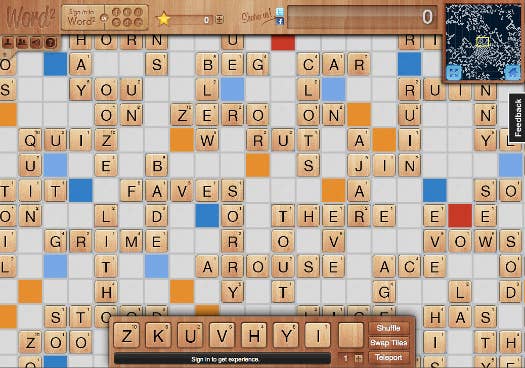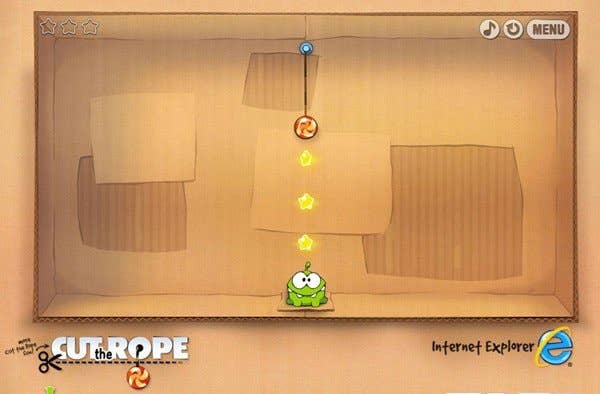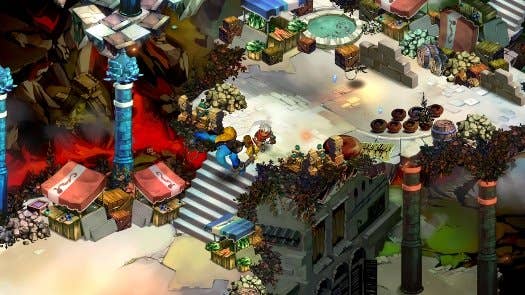Future Proof: HTML5, Native Client and the Battle for the Browser
Massively Fun, Pixel Lab and Zipline Games on the next great gaming platform
The boom in social and mobile gaming has irrevocably altered the landscape of the games industry, but in this business opportunities to rest on your laurels are few and far between.
The reassuring clarity offered by the dominance of the iPhone and Facebook has started to give way to fragmentation: the meteoric rise of Android, the nascent promise of Windows Phone and the burgeoning tablet market on one hand; the faltering first-steps of Google+, the Western spread of Asian companies like Tencent and Gree, and breakaway attempts from key players like Zynga on the other.
For game developers, this means more work, higher costs and greater complexity, with no guarantee that the extra risk will carry a better chance of reward. With more hardware and distribution options emerging every few months the addressable market is expanding in new and inscrutable directions. Gaming is no longer corralled into discrete and largely isolated platforms; users want to flit from mobile to web to console to tablet to PC, so the key challenge for any game developer is to get their product on as many devices as time and resources will allow.
In that respect, the promise of HTML5 is a sort of Holy Grail: game experiences once only available through native apps and plug-ins, now achievable seamlessly through the browser on any device that can support one - mobile, PC, tablet, smart TVs, you name it. Write a game once, take it anywhere.
HTML5: The Good
In a recent survey of almost 2200 app developers, commissioned by Appcelerator, 79 per cent confirmed that they would be integrating HTML5 into their products in 2012. The various technologies that comprise HTML5 are still being discussed and refined by standards organisations and browser vendors, but for those involved in that process its place in the future of game development is all but assured.
Kevin Moore is one of those people. He is a veteran software engineer and a partner in Pixel Lab, the app developer behind the HTML5 pool game Agent 008 Ball and the HTML5 edition of mobile hit Cut The Rope. The latter game, in particular, illustrates a key point about HTML5: it may not be able to support Call of Duty exactly, but it's already more than capable of producing the sort of games that millions of people have paid millions of dollars to play.

"The set of experiences you can create now that work really well across mobile and desktop and TV, on whatever default browser people are using, without installing a plug-in, without installing an app, the quality of those experiences Is getting much better," Moore says.
"The browser is fine if you want to do Words With Friends. You don't need much more than a browser can provide. So why limit yourself to having three different engineering sets to understand - building iPhone and Windows Phone and Android apps - when you can just go HTML?"
Massively Fun's Grant Goodale frames HTML5 in much the same way. Right now, Massively Fun's MMO/word-game hybrid, Word Squared, is perhaps the most convincing demonstration of HTML5's unique strengths. The design is simple, certainly, but it offers seamless cross-platform interaction regardless of which devices the players are using. And if a new hardware platform were to emerge in the coming months, Word Squared could be ready for distribution almost immediately.
These qualities can be neatly summed up by one word: reach, and in that respect nothing else comes close to HTML5.
However, from Goodale's point-of-view there is another, quietly seductive quality to HTML5: it allows developers to leap-frog the administrative problems and prohibitive costs associated with releasing products on closed platforms like Facebook, iOS and Xbox Live.
"I fully expect a lot of small developers to be very gung-ho about HTML5," he says. "Our game designer has been working on a variety of platforms for about 20 years. He's a veteran of the console wars, and back then it was a couple of million dollars to get your foot in the door. The manufacturing and distribution costs are obscene.
"Then along came the web and Flash, and we thought, 'Oh great, we're free. We can publish our games anywhere we like. We're free of this tax to just put out a game. And then the web became Facebook, and all of a sudden it's a 30 per cent tax on everything that happens."
This is really the big browser companies recognising that the browser is the next entertainment platform. This is the war for the desktop, the mobile device and the couch
Grant Goodale, Massively Fun
"Getting to skip app stores, especially in mobile, is huge," adds Moore. "In terms of how you think about monetising, in terms of the restrictions you have, in terms of update cycles; I've heard crazy things about how long it takes to update a game on Xbox, and the cost. So for me there's a pull to getting out of native apps, because of the overhead, and [HTML5] technology is moving so fast... It's so clear that this is the fastest moving area in development."
For Moore, the ease of distribution is also a major draw. Where plug-ins from company's like Unity have under-performed in terms of conversion rates, with HTML5 the developers' mechanism for deployment is a URL - something that virtually anyone who has used the internet can understand.
"You have to tweak [the app] so that it downgrades nicely on the iPhone, and you have to tweak in Opera, and tweak in Internet Explorer, but the upside is that you can just send someone a URL - that's substantial," he says.
"Maybe you won't target a first-person shooter there, but if you're making a casual game, a card game, or even a 2D scroller, I think we're absolutely at the point where it's realistic to target the browser. And we can skip the Apple App Store and the Android app store, and whatever crazy Windows 8 approval process you have to go through."
In terms of audio, graphics and many of the usual metrics for judging product quality HTML5 falls short, but Goodale regards the notion that it isn't 'good enough' for games as erroneous - it's just good at a specific set of of things. Despite his efforts on Word Squared, however, Goodale believes that HTML5 still needs a "marquee experience"; a game that can highlight the potential of the platform in the same way that, say, Wii Sports did for the Nintendo Wii.
"Once we have that, I think you'll see the pace of innovation quicken. I think you'll see developer adoption quicken."
HTML5: The Not So Good
Exactly when that will happen is another matter. Indeed, the pace of innovation is a major pain-point with HTML5, and not due to a lack of trying. Google and Firefox can both develop APIs to improve audio, for example, but they need to be scrutinised and agreed upon by standards organisations before either can fall under the HTML5 banner.
"It's a fairly nascent platform with a lot of stakeholders, so you're looking at a world in which one browser manufacturer can absolutely fix web audio in the span of six weeks," Goodale says. "But if you want to do that in a standards-type fashion, if you want everybody to agree on it so the platform doesn't fragment beyond recognition, then you have to talk about organisations like the W3C [the World Wide Web Consortium], and suddenly things slow down. This is nothing new - we've been dealing with this in the consumer web world for decades at this point.

"We understand where the boundaries are, we know what the issues are, and yes, it is definitely slower going than a lot of us would like. But there's a community group for gaming that's being run by the W3C: Google, Mozilla, Internet Explorer, Opera, virtually every major browser vendor is at these meetings - Apple being the notable exception.
"This is really the big browser companies recognising that the browser is the next entertainment platform. This is the war for the desktop, the mobile device and the couch."
According to Moore, discussions currently in progress include WebGL support, APIs for tilt-control, gamepad support and full-screen modes, and many more; So many, in fact, that if "even half of those make the mainstream in the next 12 months, HTML5 is going to be a spectacular bet for gaming. No question."
For Todd Hooper, CEO of Zipline Games, 12 months is a long time in game development, and particularly in smartphone and tablet development - the main focus for HTML5 games at present. Ultimately, the new iPad doesn't have a quad-core A5X processor and retina display just to make Cut The Rope or Words With Friends look sharper. The rate of change in smartphone and tablet hardware is fundamentally altering what even casual consumers expect from their games, and Hooper believes that HTML5 won't progress quickly enough to close the gap.
"You can get a dual 1Ghz core in a phone now," Hooper says. "The new Samsung Galaxy and the new Droid Razr - these are incredibly fast phones. There's no doubt that, with what you can do with those phones, you're going to want native performance to do it, and you're going to want to raise the bar for all games. HTML5 just can't do that for you. People talk about technical workarounds, but once you head down that path you may as well be doing native development."

Hooper has been vocal about his doubts over HTML5 as a tool for game development in the past. Indeed, the last time we talked he dismissed the idea as "hype", but while his complaints elicit vigorous defences from both Moore and Goodale, there's a pertinent truth behind the provocative language. HTML5 may serve the needs of the developer, but Hooper argues that it is fundamentally out of step with the needs of the consumer.
"I think it's a dream. I think that's a beautiful dream, but it's still a dream. We have a top 30 game on Android right now; if people want to buy things in the game they press a button, it goes to their Google Wallet, and they give us money. If that was an HTML5 game I'd have to write all that stuff from scratch and people would have to whip out their credit cards. So users have to learn that there's a new way to pay for these games, and frankly, the users seem pretty happy with the status quo.
"A lot of the dream of HTML5 is write once and run anywhere, and to escape from the tyranny of the app stores. I mean, they're noble goals, but in the real world today I'm not sure how relevant they are. Maybe two or three years out it could be more interesting, but today it's really tough to make that case.
"There's a lot of work involved in billing, and app developers now are really spoiled with Apple and Google taking care of that for you. And taking care of the credits and the refunds. I personally think, with where I'm at now, the 30 per cent is worth it."
Native Client: A Challenger Appears
One of the great unknowns with HTML5 is discovery. The dissatisfaction with the 30 per cent cut demanded by many closed platforms is motivated by the increasing difficulty developers face in getting their products noticed. To a large extent, that 30 per cent is an entry fee for access to an established marketplace, but Goodale and Moore believe the sheer number of products, the growing influence of entrenched players like Zynga and Rovio, and the abrupt closure of viable distribution methods has eroded that benefit to the point where there's little difference between iOS and Facebook and the open web.
They have a point, but finding an audience is still problematic, and at present there are no ready-made solutions for HTML5 developers seeking to cut out the middle-man. What's more, if consumers are content with iOS, Android, Facebook and similar services - as Hooper suggests - there's precious little motivation for a third-party remedy to emerge.
For Hooper, a more compelling browser solution for game developers can be found in Google's Native Client [NaCL]; a sandboxing technology that allows native code to run safely in a web page with no plug-in and relatively little investment and effort on the part of the developer. Bastion and Mini Ninjas are already available on the Chrome web store, while From Dust is due for release next month.

Seeing games of that complexity and visual quality work almost instantaneously in a browser is a difficult experience to shake - "impressive" doesn't do it justice, and major publishers like Ubisoft and Square Enix have responded with great enthusiasm. And the benefits don't stop there: NaCL is free, Google will host the games on the Chrome store for free, developers can monetise any way they see fit, and if they implement Google Wallet they'll be charged just 5 per cent per transaction.
"There's a lot of people pushing HTML5 and Google has done a lot for HTML5, but the key difference is that they realise that, in terms of games, there's not really that much there yet," Hooper says. "I really don't think there's any limitations on what Native Client can do. It's still early days, but if you think about it longer term, you're running a native piece of code, so anything your PC can do Native Client should be able to figure out a way to present that to you.
"If you're thinking about delivering high-end games in a browser you've probably already realised that HTML5 isn't going to work, and now you've got this new technology option that is working. It's a game that you would normally be playing on your Xbox or PC and now it's running in a browser. It's real, it's here, and I think it's really changed the landscape even in the last 90 days [Google launched the NaCL in December 2011].
"We just didn't have that option before, but now people have seen it and that's made a big, big difference."
Both Goodale and Moore display similar admiration for what Google has achieved with NaCL, with Moore showing particular interest in the potential of the technology if it was applied to Google TV. However, Moore's doubts over NaCL are based on a fundamental belief that its longevity will depend on competing browser vendors adopting it - otherwise, NaCL could end up just another curio like Silverlight or ActiveX.
"It's not going to bread-and-butter internet," he says. "I can't imagine a time when Microsoft would take up something like NaCL, which for the time being will matter in terms of what Internet Explorer decides to do.
"But everyone will keep an eye on it, and when people see the kind of performance you can get in a browser, behind a URL, and ostensibly safe, it will keep us imagining. And if that's all it ever is that's still amazing, because it pushes the technology forward. If Mozilla decided one day that this was a good way to enable top-end scenarios it could be potentially game changing, but I'm certainly not holding my breath."
In 18 months or 2 years, the question isn't going to be, 'Can we do this in the browser?' It's going to be, 'Do we have to do it out of the browser?'
Kevin Moore, Pixel Lab
However, while NaCL may never make it beyond Chrome, that still leaves it with an addressable market of 200 million people launching the browser every 7 days, and that number is only getting bigger. For a game developer with an extensive back-catalogue programmed in C++ that's an enormous opportunity, while it also allows new developers to stick with familiar languages without drastically reducing their potential audience or being forced into a publishing contract with a console manufacturer.
Google hasn't revealed its plans for NaCL on smartphones or smart TV, but Hooper claims there is no technical reason why both couldn't happen eventually. And at GDC this year Google's game developer advocate, Colt McAnlis, announced that NaCL now runs inside Google+. Facebook has CityVille and The Sims Social; with NaCL, and the sort of companies already throwing their support behind the technology, Google+ could theoretically support head-to-head sessions of Trials HD. It's a beguiling thought
There are strengths and weaknesses to both HTML5 and Native Client. At present, the former is more a tool for the creation of consumer app and the latter is restricted to Chrome, but both indicate a strong future for the plug-in free browser as a platform for games of all kinds - casual and core, new and old.
Indeed, how quickly game developers start working with these technologies is almost a moot point, as both are being pushed forward by forces that have little to do with games: for NaCL, the rapid uptake of Google's Chrome browser and its spread across more and more devices; for HTML5, the support of many of the biggest companies on the web, all of which have a lot more riding on its future than just game development.
"I talk with a lot of big game companies, and I haven't met one yet that doesn't have some sort of HTML5 pilot work going on," says Goodale. "Everybody recognises that there's something here. Can we get to Bastion quality experiences without Native Client in the next two years, three years? We don't know, but that's where we're headed."
"It's probably just a waiting game," adds Moore. "In 1995 ordering a pizza online seemed ridiculous, but today I do it all the time - I never call a pizza place any more. It's not going to be 15 years [for HTML5]; it's going to be 18 months or 2 years, and the question isn't going to be, 'Can we do this in the browser?' It's going to be, 'Do we have to do it out of the browser?'
"I've gone from having a preference to having a strong default around web. It would have to be a very special scenario for me to go and build native. For the top of the long tail - for the top 1 per cent - will the browser be enough? No, you'll always have people writing native to get every ounce of hardware performance out. The question is: 'Where's the bar for good enough?'"

